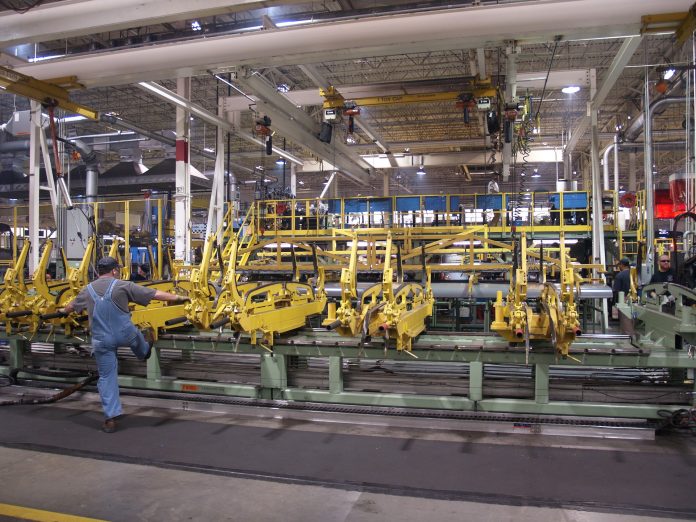School Transportation News is compiling statements from manufacturers and industry stakeholders related to the final Greenhouse Gas Emissions Regulations for Heavy-Duty Vehicles-Phase 3 rule. STN will update this article as more companies provide insight.
Cummins
Cummins appreciates EPA’s efforts to partner with industry and other government agencies to finalize the Phase 3 rule to reduce greenhouse gas emissions. The industry needs nationwide regulatory certainty to successfully move toward a decarbonized future. This is an ambitious goal, and there will be challenges across our industry to reach it. However, Cummins is uniquely positioned to develop and manufacture a broad range of technologies that enable our customers to prosper, wherever they are along their energy transition journey. Cummins acknowledges the different perspectives on the rule but believes by continuing to work together with industry partners and the government we can achieve our mutual goals to reduce emissions, create American jobs and contribute to a stronger economy.
Navistar
Navistar appreciates the Environmental Protection Agency (EPA) consulting with the industry on its greenhouse gas emissions standards for heavy-duty vehicles Phase 3 (GHG 3). We are currently reviewing the regulation’s implications for our customers and product planning. We are committed to fully understanding the potential impacts and ensuring compliance. We will continue to engage constructively with the EPA and work with customers, dealers, and other stakeholders to realize our shared long-term goals.
Thomas Built Buses
We thank the agency for addressing industry concern about the challenges of the early years of the rule and we remain committed to upholding the spirit of this regulation. At Daimler Truck North America, it is our aspiration to offer only carbon-neutral new vehicles in the U.S. by 2039 and our comprehensive product portfolio of state-of-the-art trucks will ensure our customers can transition to greener transportation on the road ahead. Ultimately, the successful transition of the commercial vehicle industry is dependent on the availability of reliable zero emission charging and refueling infrastructure and the ability to conduct business at a reasonable cost of ownership. We appreciate the regulation’s recognition of this fact and look forward to working with the EPA as well as federal and state governments to deliver both.
Related: EPA Takes Technology-Neutral Approach in Finalizing Phase 3 GHG Rule
Related: Some Type A School Buses Fall Under Latest EPA Pollution Reduction Rule
World Resources Institute, Electric School Bus Initiative
Today the U.S. Environmental Protection Agency (EPA) announced its Greenhouse Gas Emissions Standards for Heavy-Duty Vehicles, Phase 3 standard.
These standards will avoid 1 billion tons of greenhouse gas (GHG) emissions from heavy duty vehicles, including trucks and school buses, by 2055 by setting standards for model-year 2027 through 2032, complementing the recently-released standards for passenger vehicles. In the U.S., heavy-duty vehicles make up four percent of the vehicles on roads today but account for over a quarter of all transportation sector GHG emissions. The transportation sector as a whole accounts for the largest portion (29 percent) of all U.S. GHG emissions. These vehicles also produce harmful pollutants that affect local air quality and health, especially for those living near highways, freight hubs, ports and depots, which are more likely to be lower-income people of color.
Children are particularly vulnerable to pollution from heavy duty vehicles, including diesel pollution from 90 percent of the nation’s school bus fleet which presents health and developmental dangers to students, drivers, and communities.
Following is a statement from Sue Gander, director of World Resources Institute’s Electric School Bus Initiative:
“This new standard will allow children who ride diesel-powered school buses, truck drivers who move goods across the country, and the communities living near highways, depots and ports to breathe easier.
“Alongside this standard, the federal government has made billions of dollars available to support the transition to zero-emission trucks and buses, moving us closer to a future where these vehicles don’t worsen the climate crisis and our health. The momentum is already building: Companies are manufacturing cleaner trucks and buses, school districts are showing high demand for electric buses, and states are advancing smart policies to speed up the adoption of cleaner trucks and buses.
“This is a step forward for America’s transportation policy. Policymakers should keep their foot on the accelerator to speed the transition to clean trucks and buses that provide communities better air and students a healthier ride to school. This includes continuing to provide support for charging infrastructure and access to technical assistance, workforce training, and funding and financing.”
Zonar Systems
Following is a statement from Fred Fakkema, vice president of safety and compliance at Zonar Systems.
“Fleets will ultimately determine the success of the new EPA rules, particularly given the latest standards for heavy-duty vehicles. Commercial drivers—including those in the construction industry and other work trucks, transit buses, school buses, and last-mile deliveries—face complex challenges and operating conditions as they manage the transition to a zero-emission future. They need to update processes, teams, and technology, and all this takes considerable time and investment. The commercial transportation industry needs realistic timelines and targets to contribute to the shared goal of zero emissions.”
















